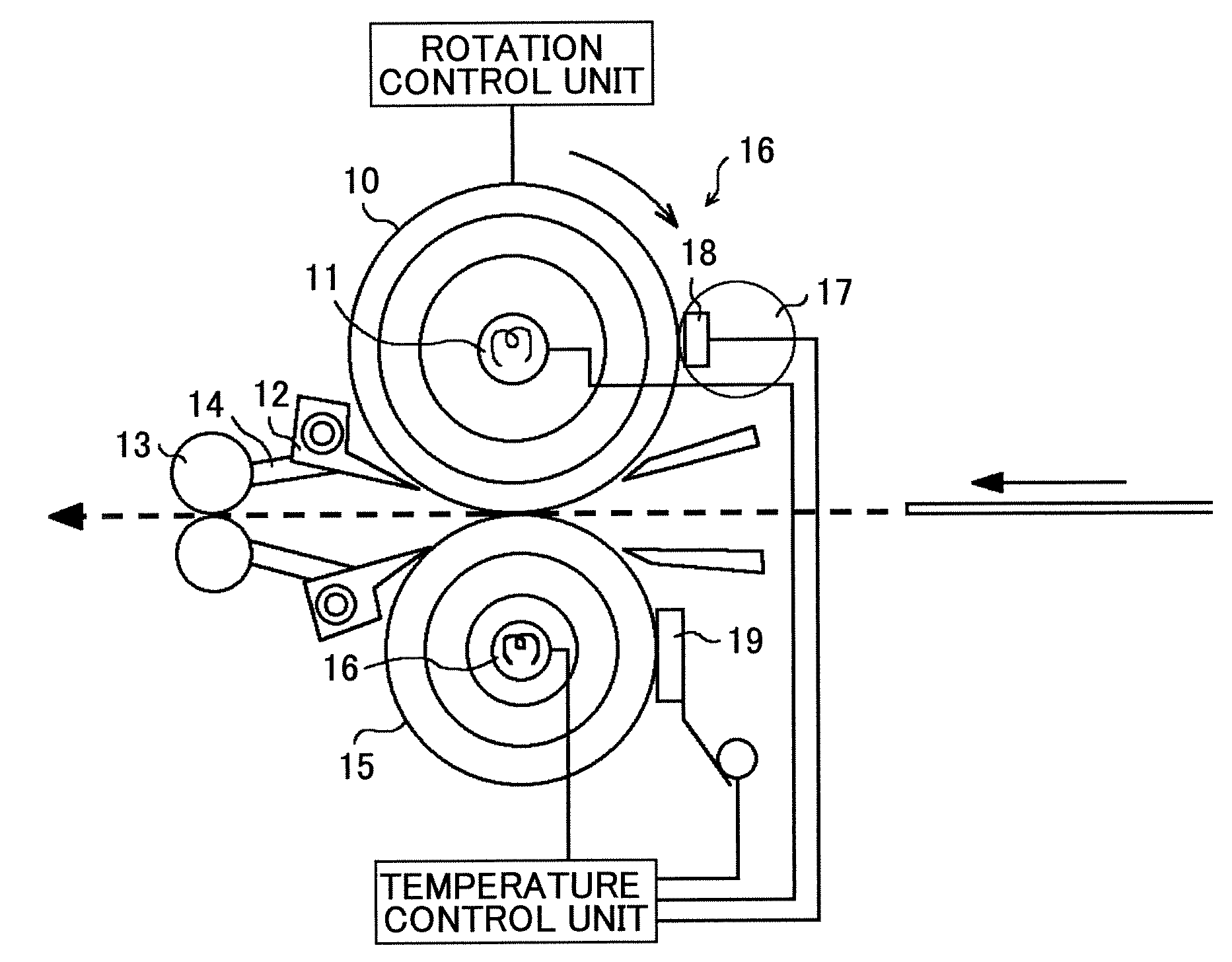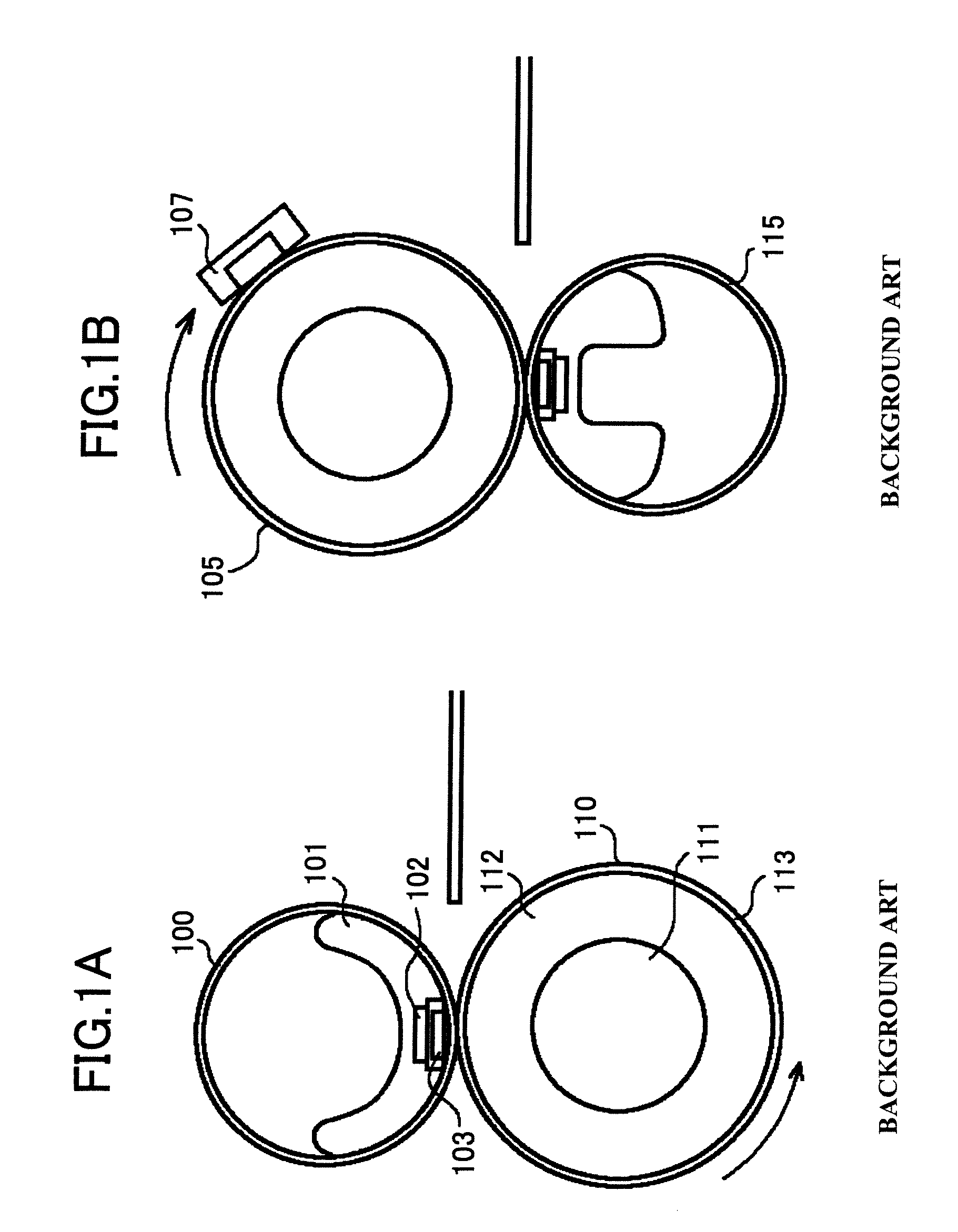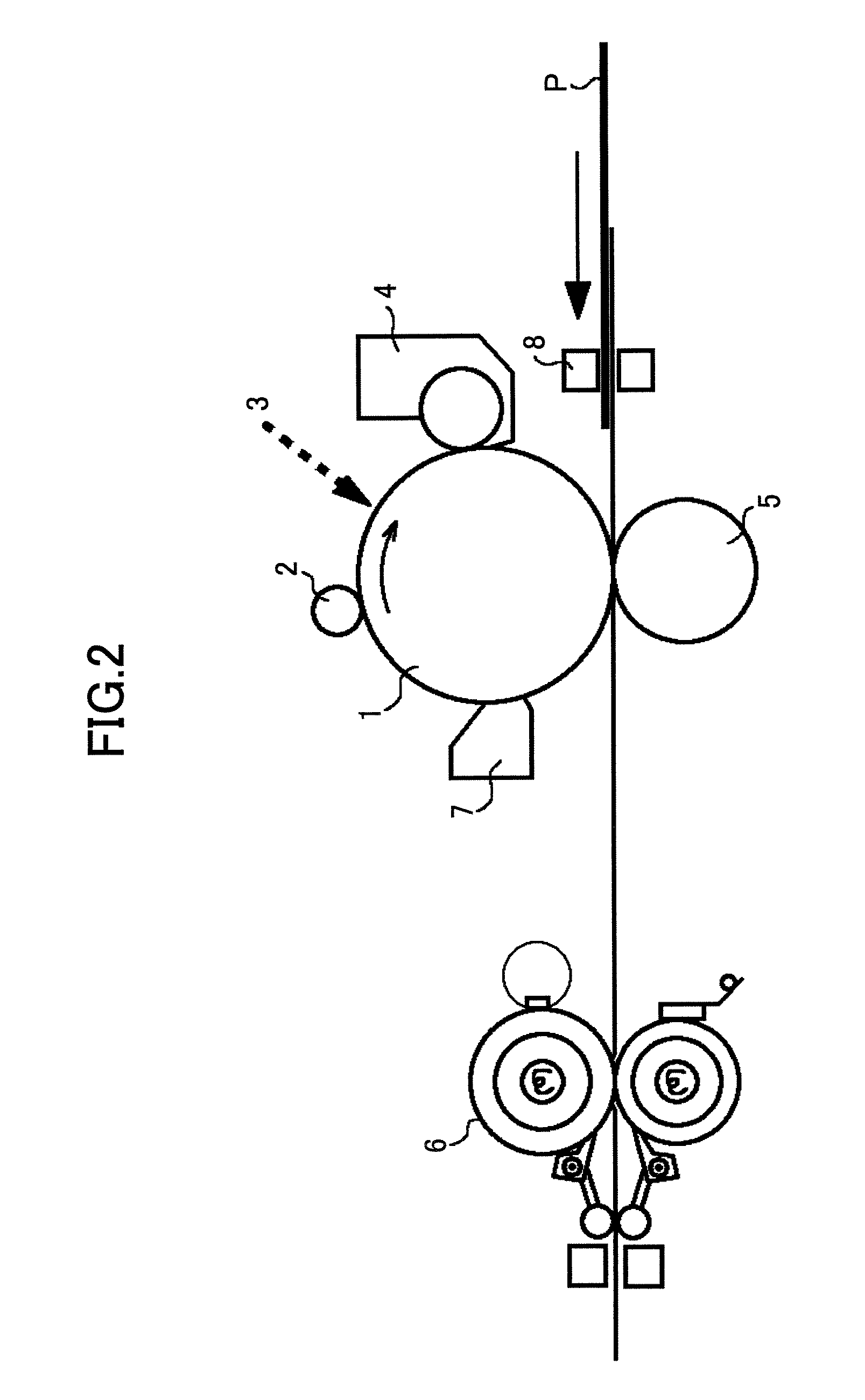Fixing apparatus and an image formation apparatus
a technology of fixing apparatus and fixing roller, which is applied in the direction of lighting and heating apparatus, instruments, furniture, etc., can solve the problems of increasing the capacity increasing the wait time, and greatly fluctuating the temperature so as to reduce the temperature drop of the fixing roller, the fixing quality is satisfactory, and the accuracy control
- Summary
- Abstract
- Description
- Claims
- Application Information
AI Technical Summary
Benefits of technology
Problems solved by technology
Method used
Image
Examples
Embodiment Construction
[0105]In the following, Embodiments of the present invention are described with reference to the accompanying drawings. First, an example of an image formation apparatus according to the present invention is described with reference to FIG. 2.
[0106]The image formation apparatus includes a photo conductor drum 1 serving as an image supporting object, where photo sensitive material, such as OPC, amorphous Se, and amorphous silicon, is formed on a base made of such as aluminum and nickel in the shape of a cylinder. The photo conductor drum 1 is rotationally driven in the direction of an arrow, and the surface of the photo conductor drum 1 is uniformly electrified (charged) by an electrification roller 2 serving as an electrification apparatus. Next, an electrostatic latent image is formed by scanning a laser beam 3 (optical system is not illustrated) that is turned on and off according to an image to be formed. The electrostatic latent image is developed and made visible by a developme...
PUM
| Property | Measurement | Unit |
|---|---|---|
| thickness | aaaaa | aaaaa |
| thickness | aaaaa | aaaaa |
| temperature | aaaaa | aaaaa |
Abstract
Description
Claims
Application Information
 Login to view more
Login to view more - R&D Engineer
- R&D Manager
- IP Professional
- Industry Leading Data Capabilities
- Powerful AI technology
- Patent DNA Extraction
Browse by: Latest US Patents, China's latest patents, Technical Efficacy Thesaurus, Application Domain, Technology Topic.
© 2024 PatSnap. All rights reserved.Legal|Privacy policy|Modern Slavery Act Transparency Statement|Sitemap



